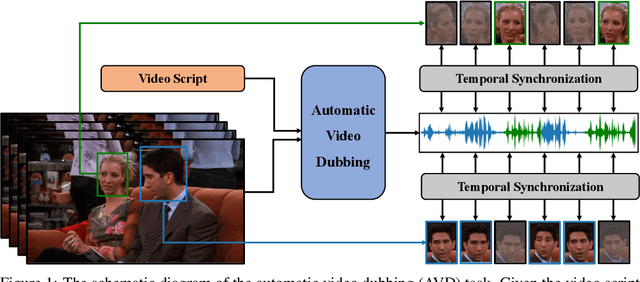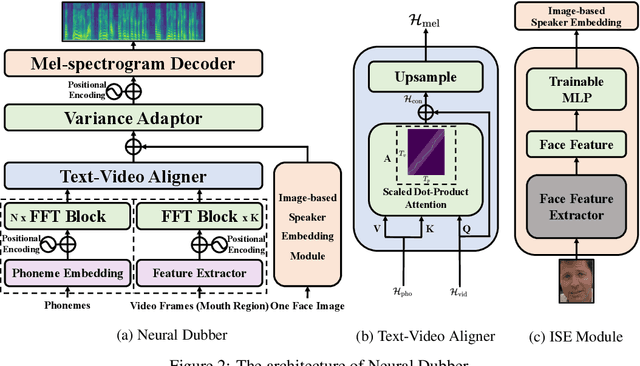Neural Dubber: Dubbing for Silent Videos According to Scripts
Paper and Code
Oct 15, 2021



Dubbing is a post-production process of re-recording actors' dialogues, which is extensively used in filmmaking and video production. It is usually performed manually by professional voice actors who read lines with proper prosody, and in synchronization with the pre-recorded videos. In this work, we propose Neural Dubber, the first neural network model to solve a novel automatic video dubbing (AVD) task: synthesizing human speech synchronized with the given silent video from the text. Neural Dubber is a multi-modal text-to-speech (TTS) model that utilizes the lip movement in the video to control the prosody of the generated speech. Furthermore, an image-based speaker embedding (ISE) module is developed for the multi-speaker setting, which enables Neural Dubber to generate speech with a reasonable timbre according to the speaker's face. Experiments on the chemistry lecture single-speaker dataset and LRS2 multi-speaker dataset show that Neural Dubber can generate speech audios on par with state-of-the-art TTS models in terms of speech quality. Most importantly, both qualitative and quantitative evaluations show that Neural Dubber can control the prosody of synthesized speech by the video, and generate high-fidelity speech temporally synchronized with the video.
 Add to Chrome
Add to Chrome Add to Firefox
Add to Firefox Add to Edge
Add to Edge